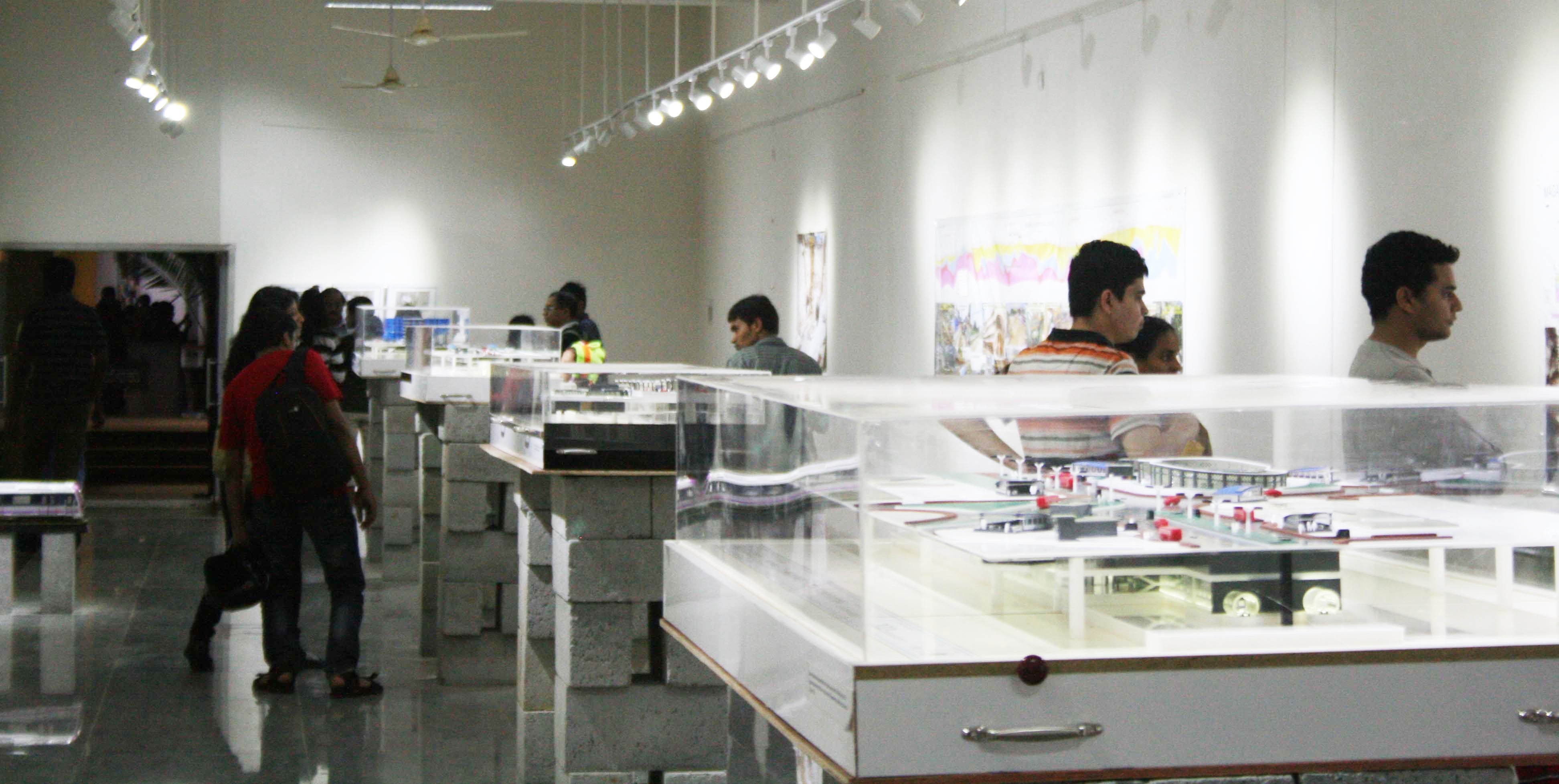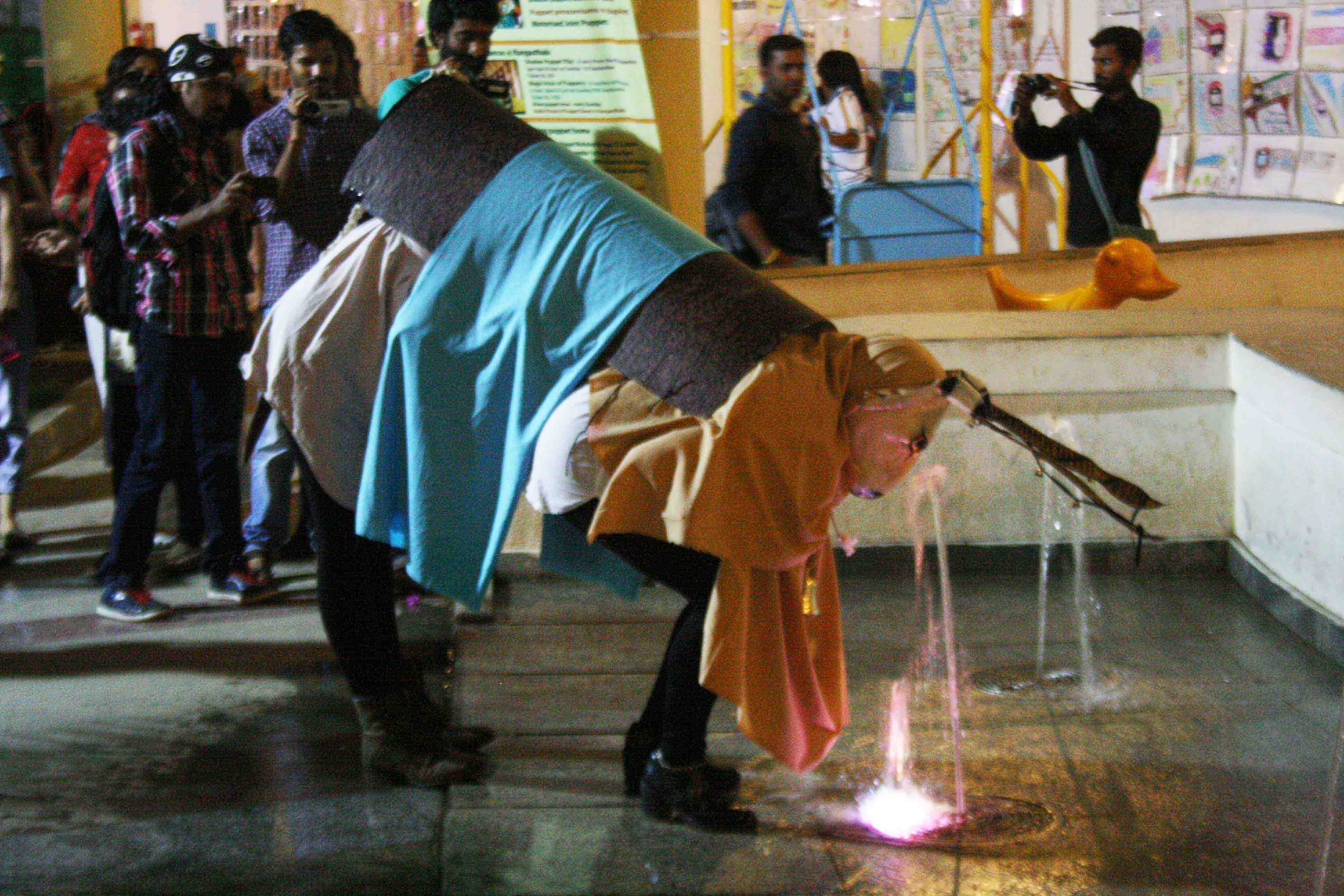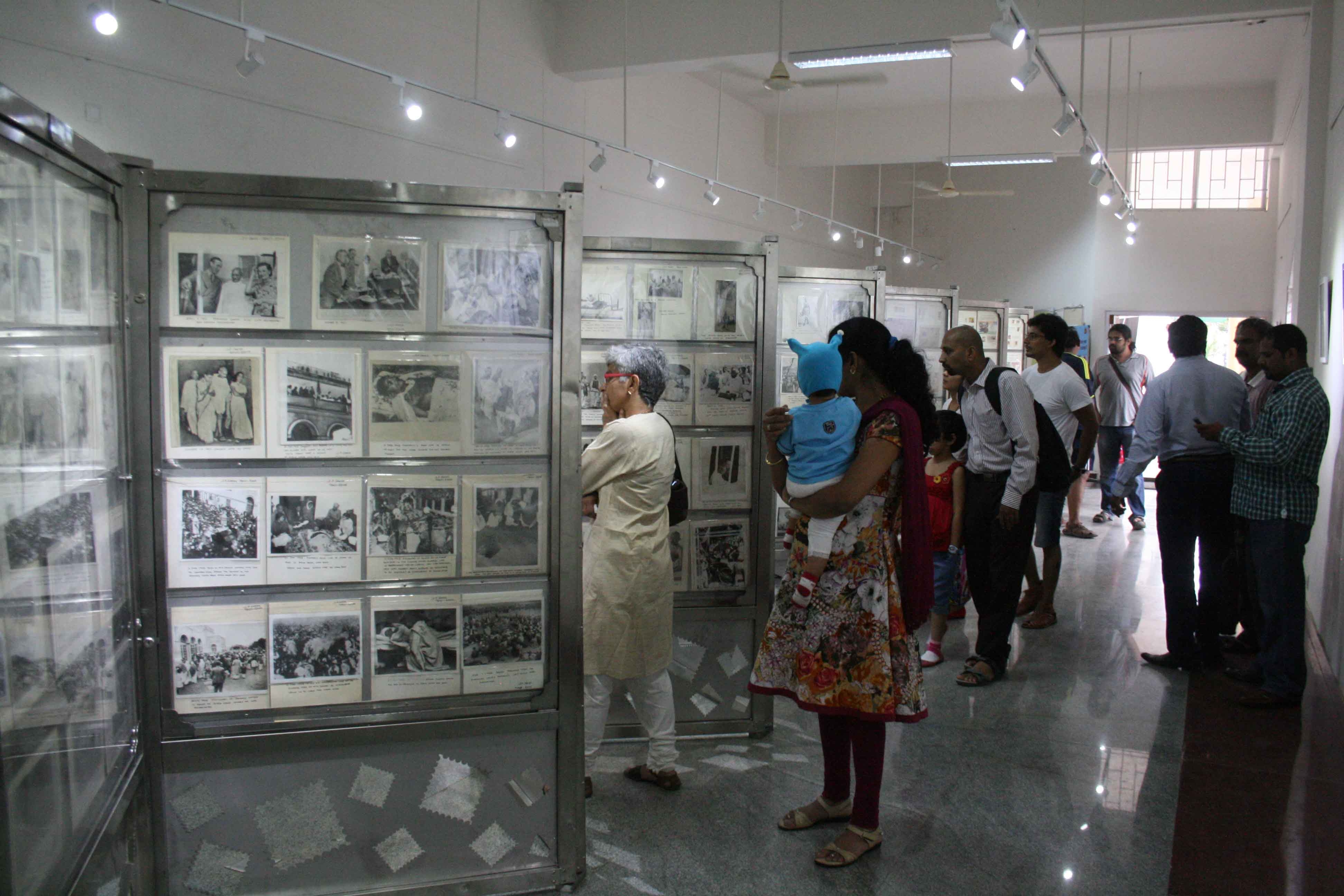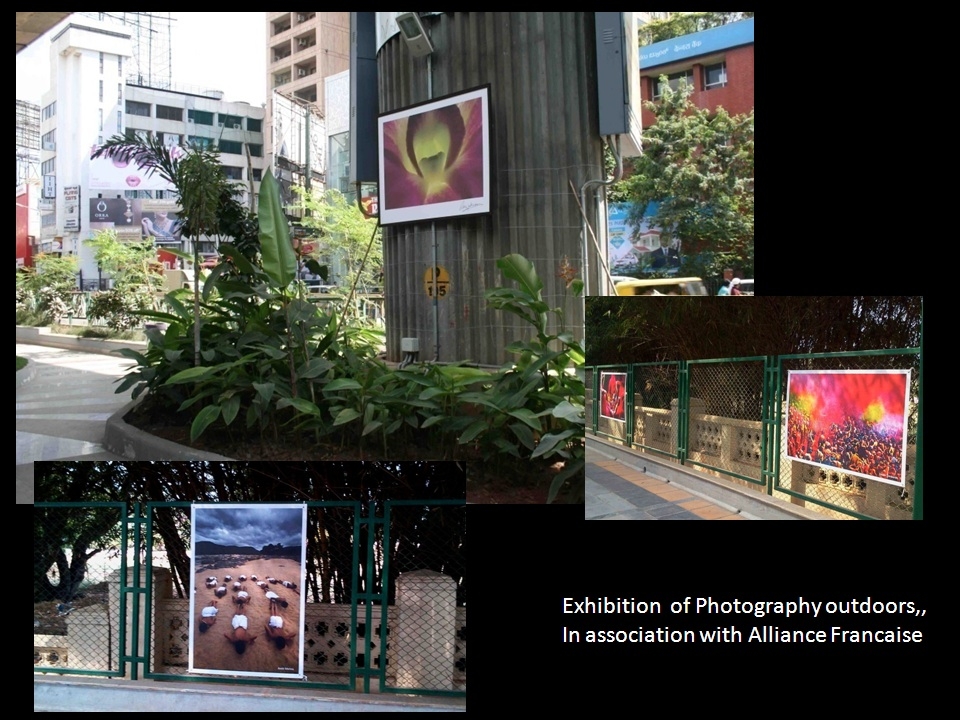Bangalore-based artist and curator Surekha was the founder-curator of Namma Metro’s Rangoli Art Center. Here, she takes us through the journey of setting up the innovative public space and seeing it proliferating.
The Bangalore Metro Rail Corporation Limited (BMRCL – Namma Metro) initiated the Rangoli Metro Art Center, R-Mac, an urban art space for the city with the primary objective of providing cultural, recreational and aesthetic value to commuters and cultural specialists alike, bringing them both on the same platform. The space opened to the public on May 6, 2013.

Backdrop
I worked as a founder curator of R-Mac from 2012-14 as it tied in with my larger curatorial involvement with community and city projects. Since there was no preset current model for how a public space should be in the city, a cultural map had to be initiated with an anticipation of a certain public and its response. To cater to existing anticipation of the public was as important as to prepare them for newer grounds of aesthetic perception. However, the fact that Rangoli was initiated in a space which was already familiar as ‘The Boulevard’, a space for Bangalorean’s nostalgia also added to the fast regained popularity of the space as well as re-structuring it.
Bangalore had a craving for public art space since long. There was no space in the city where all the cultural community could interact and reach the public in a holistic manner, though there are several Artistic Initiatives which have been trying to bridge this gap in more specialised ways with certain consistency. Rangoli is a space meant to bridge common man and the cultural community, as a testing ground. The architecture of the space is meant to gesture openness in attitude. These spaces, which I would call as ‘ground-zero’—were set up in order to bring together several unfamiliar artistic practices, together. The name Rangoli implies connecting dots, each dot representing various cultural aspects and attitudes of people’s aesthetic reception.

Beehive of Activities
The initial ground work in the making of R-Mac included creating an ambience filled with an interactive, friendly, informative and beautiful feel; and not intimidating, as might the white cube galleries and art spaces do. Friendship Point, the interactive giant Snake and Ladder and Bangalore Info wall were created as permanent interactive structures while the galleries and outdoor spaces had changing exhibitions and ongoing events.
Collaborations with art Institutions like Karnataka Chitrakala Parishat, Srishti School of Art, Design and Technology, Ken School, Kalamandir, and Bangalore University led to the outdoor art works created by students and were displayed in the space which created an art atmosphere. Poetry reading sessions, book exchange programs, drum jams, temporary installations like sand-cast sculptures, and events like live art and performative events were facilitated.
Many NGOs dealing with ecology and environmental issues found R-Mac an apt place to showcase their art activities; along with these several curated shows –focusing on the city and public history took place with collaborations involving Philately Association (Indian postal service), army archives from MEG, puppet collections from Dhaatu, leather puppetry from Chitrakala Parishath, archives from Gandhi Bhavan, collaborations with Max Mueller Bhavan, archives from BMRCL, street photography from Alliance Française, and other programs.

Archival city photographs from “Bygone Bangalore” and international art collaborations were pitched in dialogue with each other, to be received and responded by the general public who came in the thousands on the weekends.
R-Mac doesn’t resemble a museum in the conventional sense in its appearance, activities or facilities. In certain ways it is a make-shift museum, wherein people from all walks of life occupy the same spot at varying periods. It’s a semi private and semi-public space with the memories of events and art shows, as something that is permanently etched in one’s mind. The once-a-month drum jam, the snake and ladder play for children, the contemporary art performances, and the information wall (a chronologic introduction to the making of Bangalore) redefine the space as a museum without walls (Andrea Malraux’s term). The legacy and hierarchy of a classical notion of a museum is not only intervened and contested but a re-structuring of the notion of public and private is being redefined at this art center.
R-Mac became a much loved space in the city within a span of six months. One can browse online to find several YouTube videos uploaded by the public, which has become a public archive by default. Several articles regarding the activities filled the newspapers. One of the interactive community projects, “A Letter to Gandhi,” reached such a wide audience that the project was telecast by about 150 channels all over the world.

R-Mac deliberately targeted different kind of audiences, like cultural enthusiasts and specialists and the cultural experts, as well as the floating general crowd. Its achievement lies in transforming the floating crowd into a permanent one, initiating and curating several interesting activities, wherein the audience would return time and again. Art here is received with curiosity and makes possible and redefines the role of the audience. The curiosity of the visitors to know more about the history of the city resulted in a photography exhibition, “A City in Transit” for three months with widespread public appreciation. Most of the curated exhibitions were derived from the archives of different government institutions and private collections. The immense footfall at the center, for both, serious shows and spontaneous entertaining events, has transformed this into an abode for permanent museum and a periodic make-shift fare.
Our notions of what is or isn’t public isn’t quite well-defined. It reflects the transient character of urban life. It encourages us to see and interact with urban space in new ways. It confronts the manner in which public space is organised and used. Art transforms public spaces and reflects how public art engages and challenges the artistic, creative, social, and political uses of public space.
Visit Rangoli Art Center’s Facebook page.
About the Author
 Surekha is a visual/video artist and curator based in Bangalore and has been exploring how artistic practice can engage with public and private spaces. She is the founder curator of Rangoli Metro Art Center (BMRCL) Bangalore (2012-2014), co-founder of Bar1 Collective (2001-2012), co-curator at Khoj international workshops (2002). www.surekha.info.
Surekha is a visual/video artist and curator based in Bangalore and has been exploring how artistic practice can engage with public and private spaces. She is the founder curator of Rangoli Metro Art Center (BMRCL) Bangalore (2012-2014), co-founder of Bar1 Collective (2001-2012), co-curator at Khoj international workshops (2002). www.surekha.info.







very colorful post! I love these rangoli designs. I learned many of the designs from my mother. They really reflect or beautiful culture. Thanks for providing them.
Welcome. We are happy that you found the article useful.